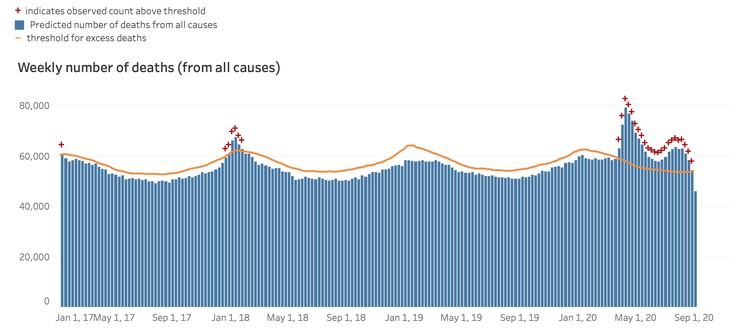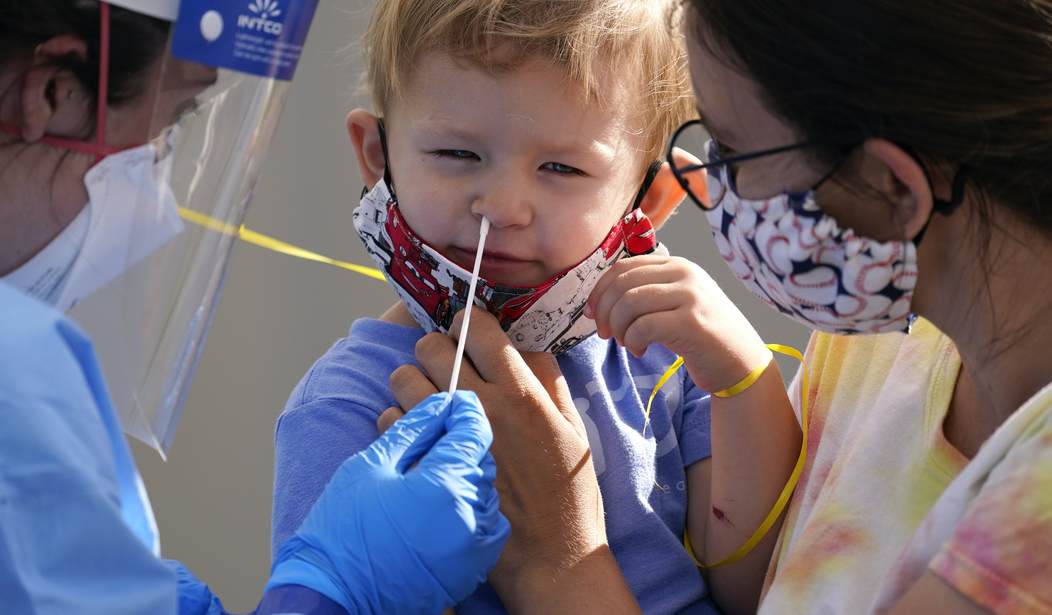The Wuhan Virus is one tricky little devil, and it seems as though the longer we deal with its impacts the less we understand about it.
Politics, unfortunately, plays a big part.
The latest confusion stems from who has actually been infected by the Wuhan Virus, and testing might not be as reliable as we’d hoped.
JustTheNews reported last week that “a significant number of confirmed COVID-19 infections in the U.S. — perhaps as many as 9 out of every 10 — may not be infectious at all,” according to a “growing body of research.”
The story goes on:
A burgeoning line of scientific inquiry suggests that many confirmed infections of COVID-19 may actually be just residual traces of the virus itself, a contention that — if true — may suggest both that current high levels of positive viruses are clinically insignificant and that the mitigation measures used to suppress them may be excessive.
That isn’t to say that the Wuhan Virus and its accompanying COVID-19 infection aren’t serious.
Perhaps the best indicator is the CDC’s data for “excess deaths.” That’s the total number of deaths above what would be normal and expected without this pandemic.

We can quibble about the data, and possibly should.
For example, someone who dies at home of a treatable heart condition because he was too scared of catching the Wuhan Virus is counted as an excess death.
The excess death figure therefore can and does include people who never suffered a COVID-19 infection.
Too often left unsaid is that every death due to the Wuhan Virus is a tragedy, but every non-COVID death caused by the lockdown is a needless tragedy.
Still, even without knowing who was killed by COVID or who is actually infectious, we do know for sure that the Wuhan Virus and our response to it together have resulted in over 200,000 deaths.
Getting back to the original point, our inability to tell who is actually infectious might help to explain this chart from Bing’s online COVID-19 tracker.
There are two items of interest in Bing’s data, only one of which is readily apparent.

The red line is the number of confirmed COVID-19 cases. The gray line — the one at the bottom you can barely see — is the number of COVID-related deaths.
The first item of interest is that the number of deaths per confirmed infections has been shrinking dramatically.
The second item of interest is the slowdown in the COVID-19 death rate.
The first COVID-19 related death was reported on February 29. The 100,000th was reported on June 3, 95 days later. The 200,000th was reported on September 20.
That’s 109 days to go from 100,000 to 200,000.
That’s roughly a 15% slowdown in death rate, which for a deadly pandemic is nothing to sneeze at.
It also goes to show you why all of this “grim milestone” reporting over our 200,000th fatality is far less than the whole story.
How can it be happening that the death rate is slowing as the infection rate is exploding?
It could be three things:
- Mostly people outside of risk groups are getting infected and then not dying
- We’re overestimating the number of people infected
- Both
There’s infected and then there’s infected. People who have low viral loads might count as infected, depending on who is doing the testing, but they’re at little risk of ever becoming sick, and just as unlikely to infect others.
The brutal truth is that with a disease like CODID-19, there was no ideal solution where tens or even hundreds of thousands of at-risk people wouldn’t catch it and die from it.
Instead of protecting the vulnerable, caring for the sick, and having everyone else follow commonsense precautions to prevent unnecessary infections, we treated an entire country of 327 million people like lepers.
All to stop the spread of a disease that might not be as infectious as current data indicate.
Or as JustTheNews wrote:
Early indications suggest the number of clinically trivial positive cases in the U.S. might be startlingly high. The New York Times said last month that a review of the cycle thresholds of positive cases in Nevada, New York and Massachusetts indicated that “up to 90 percent of people testing positive carried barely any virus.”
Those numbers, if extrapolated nationwide, could suggest that a significant proportion of the mitigation and preparation measures currently in place across the U.S. might be excessive relative to the actual level of infectious cases around the country.
One teacher reporting a positive COVID-19 test can close down the whole school, even if the viral load isn’t big enough to affect her or anyone else.
Extrapolate that one non-infectious teacher at that one school to every school and business across the country, and you have…
…well, you have exactly what we got: a nation shut down on scanty and misunderstood data.










